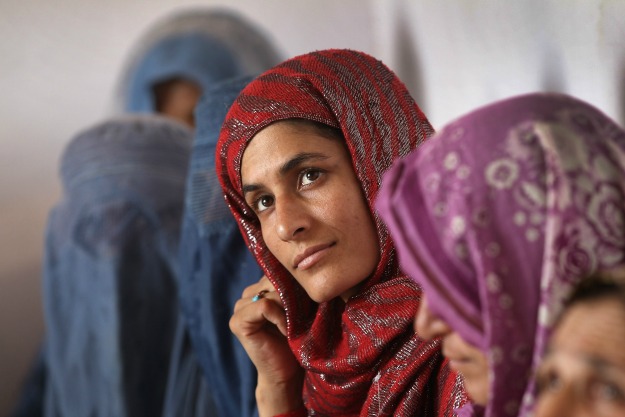Louise Arbour
Foreign Policy
On April 22, 2013, complying with the verdict of his village’s mullahs, a father publicly executedhis daughter in Afghanistan’s northwestern province of Badghis. The young mother’s alleged crime: running away with a male cousin while her husband was in Iran. This case, among many others, shows that the Afghan state has failed to protect women from violence. More than 12 years after the Taliban’s ouster, despite international support and the hard work of human rights activists, equal protection and equal benefit of the law are notable by their absence for the vast majority of Afghan women. With the international forces rushing to the exits, Kabul’s ability and willingness to protect women could further decline.
Last Friday, the U.N. Security Council held its annual open debate on women, rule of law, and transitional justice in conflict situations. This debate, the product of great normative strides in the promotion of women’s rights over the past two decades, should over time ensure that rhetoric is matched with genuine progress on the ground, including in Afghanistan as the foreign presence there is reduced in 2014.
While there is certainly more work to be done, women’s legal standing in Afghanistan has dramatically improved. The post-Taliban constitution recognizes women and men as equal citizens and gives them equal rights and protections. The Elimination of Violence Against Women (EVAW) law, promulgated by President Hamid Karzai in 2009, criminalizes rape for the first time in Afghanistan’s history. The state is now legally obliged to protect women from violence — including forced and underage marriage and physical and verbal abuse.
Afghan women, increasingly aware of their rights, are reporting cases of violence in unprecedented numbers. However, this is just the beginning. Thousands of cases are not registered, and convictions under the EVAW law are rare. Very few cases even make it to the formal justice system. Most are decided, as was the case of the young mother in Badghis, by jirgas and shuras, local councils mostly dominated by strongmen.
The Afghan judicial system remains dysfunctional, and the implementation of the EVAW law is uneven. Years of prioritizing counterterrorism and counterinsurgency over community policing have impeded the emergence of a police force that is committed to protecting women from violence. Policewomen, themselves often subject to harassment in the workplace, lack the capacity and influence to tackle cases of gender-based violence. Attempts have been made to respond to women’s needs, such as the establishment of police Family Response Units (FRUs) in provincial headquarters and large districts, but these have meager resources and poorly trained policewomen and legal advisors. The FRUs’ preference for mediation — a flawed one-size-fits-all approach to cases of domestic violence — places victims in danger, while rampant corruption in the judicial system allows perpetrators with influential contacts to serve little or no jail time.
As the Afghan presidential election approaches and foreign forces prepare to withdraw, attacks on pro-women legislation have multiplied. Conservative members have criticized the EVAW law as un-Islamic and even threatened to do away with it when the lower house’s women’s affairs committee sought parliamentary endorsement. While the law remains in place until an eventual vote, the attention its detractors have received could undermine its already limited use. If passed by the legislature, a change in the Criminal Prosecution Code, disqualifying relatives of the accused from testifying against them, would also severely constrain women’s abilities to take cases of domestic violence, the most common form of abuse, to court.
As international forces draw down, women fear the rise of warlords and militias such as the Afghan Local Police, which was created as a counterinsurgency force with U.S. support. With memories of the Taliban’s gender apartheid and violence against women, including public beatings, still fresh, there is understandably even greater concern about Kabul’s efforts, with international backing, to broker peace with the Taliban.
While the patchy implementation of pro-women laws raises concerns about Kabul’s commitment, the very fact that they exist creates, at the very least, a legal framework for rights and protections. Given the opacity of negotiations with the Taliban and the exclusion of women from the process, there are fears that these rights and protections could be conceded in bargaining by Kabul and its international backers. Instead of placing hopes in a process of accommodating hard-liners, the Afghan government would be better served by building citizens’ trust in the state, including through a police force that serves the people and a robust and effective formal justice system.
The preferences and priorities of the international community will go some way in determining Kabul’s choices. If the departing NATO troop-contributing countries and their partners allow warlords and their militias or Islamist extremists to benefit from their exits, it would reinforce the culture of impunity and women would be the most vulnerable targets. Influential international actors, particularly the United States and the European Union, should continue to support women’s rights and their political and economic empowerment. They should remind the Afghan government of its constitutional and legal obligations to protect women and to treat them as equal citizens.
With continued international support, the hard-won gains made in the past 12 years could be consolidated after the 2014 security transition. Above all, agreement on protecting women’s rights must be a prerequisite for, rather than an elusive desired outcome of, any reconciliation process if Afghanistan is to emerge as a stable, inclusive, and democratic state.
Louise Arbour is president and CEO of the International Crisis Group and the former United Nations high commissioner for human rights. Last week, the organization released a report titled “Women and Conflict in Afghanistan.”


